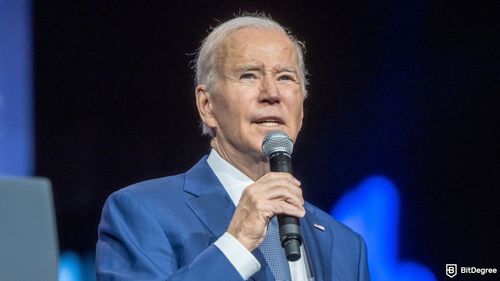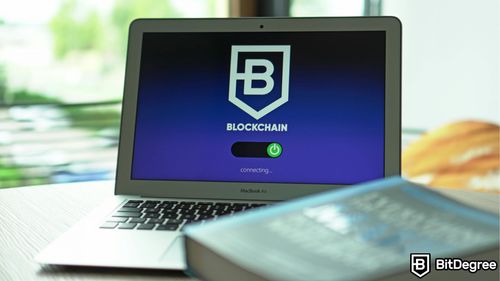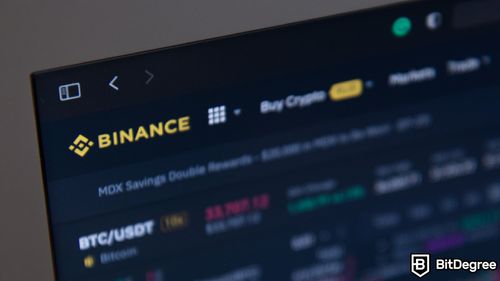Binance is a centralized cryptocurrency exchange (CEX). Founded in 2017, the Binance crypto exchange offers trading in spot, margin, futures, and options markets, using both fiat and cryptocurrencies. Binance crypto price charts are updated continuously to reflect changes in all trading markets.
Binance trading services are not available in the USA. Instead, customers can trade on Binance.US, which is a separate centralized exchange. Due to regulations, the Binance cryptocurrency exchange services may also be unavailable in other regions.
Markets
Futures swapping became available alongside Binance spot trading in 2019. By 2022, there were nearly 1,500 Binance trading pairs in the spot market and 250 pairs available in the perpetual and quarterly futures markets.
Traders on the Binance crypto exchange can use leveraged tokens in both futures and spot markets. This allows customers to gain exposure to certain leveraged positions without the risk of liquidation. Several Binance crypto fees apply, including trading, subscription, redemption, management, and funding fees.
Binance trading pairs can be set up using two crypto assets or one cryptocurrency and one fiat currency. It does not facilitate trading between two fiat currencies. The platform also acts as an escrow for P2P trading. Market makers pay Binance exchange fees at a 0.1% rate on their orders, while takers aren’t charged for the transaction.
The Binance crypto exchange supports over-the-counter (OTC) trading for large-scale trades that exceed the value of $200,000. It uses Agency Execution Algos to optimize low liquidity orders without severely impacting the market.
Special transaction fees apply to certain trading pairs and user levels. Selected BTC stablecoin and fiat pairs are free of any Binance exchange fees. There are also no maker fees on BUSD pairs. All levels of VIP users pay lower maker / taker fees based on their BNB balance, varying from 00750% / 0.0750% for VIP 1 to 0.0150% / 0.0300% for VIP 9.
Other Services
Over the years, the Binance crypto exchange has increased the range of services offered. While it primarily offers cryptocurrency trading, it has added new features such as liquidity farming and staking, brokering, and a digital wallet. Users are able to deposit fiat using USD, EUR, AUD, or several other currencies.
The Binance lending service allows users to take out loans for trading or staking. The available loan terms are set for 7, 14, 30, 90, or 180 days. According to the platform, no additional Binance crypto fees apply to transactions. Customers can use various cryptocurrencies as collateral.
The Binance Earn program enables passive earning. It supports over 180 cryptocurrencies. Locked Staking lets users lock their funds in a wallet to receive interest over time. BNB Vault is the platform’s yield aggregator.
Customers can also open a Binance Savings account to deposit flexible or locked savings and earn interest over time. Its Auto-Invest feature enables customers to automate their investments to generate passive income.
Liquidity farming is enabled on Binance Liquid Swap. Users can choose between Stable and Innovative farming. The Binance Smart Pool also allows customers to receive steady earnings in Bitcoin (BTC) by mining one of the available cryptocurrencies. Brokerage services are available via the Binance Link Program.
The Binance crypto exchange is only one part of the entire Binance ecosystem. The network has its own BNB token, hosts a launchpad for blockchain projects, provides educational content, and supports charity organizations. Customers can also access the Binance decentralized exchange (DEX) on the Binance Smart Chain.
Binance Launchpad is a platform for issuing new tokens and supporting the development of blockchain projects. Binance Academy offers the Learn & Earn program allowing users to earn cryptocurrency by completing various digital courses. Binance Research focuses on providing insights and analysis on the crypto industry based on real-world data.
Binance enables cryptocurrency purchases using a debit or credit card. The Binance crypto fees for using this service are 2% per transaction. In July 2020, the platform launched its own Visa debit card known as the Binance Card. It automatically exchanges cryptocurrency to fiat currency in real time.
Binance customers can access their assets using the Trust Wallet, a decentralized digital storage platform. It supports both cryptocurrencies and non-fungible tokens (NFTs). In 2021, the Binance crypto exchange launched its own NFT Marketplace that hosts various collections, mystery boxes, and themed events. It also supports special fan tokens.
Binance provides API services, including the Testnets for Binance spot and futures trading. Binance API is compatible with popular programming languages, such as Python and Java. API trading services provide access to spot, margin, futures, and options markets.
The company has also developed contactless and borderless cryptocurrency payment technology known as Binance Pay. It allows users to make near-instantaneous cryptocurrency payments using over 200 assets. The transactions are free of any Binance crypto fees. It requires KYC compliance to ensure security.
About the Company
Binance was founded in 2017 by Changpeng Zhao, better known as CZ, and Yi He. Initially, the company was started in China and briefly relocated to Japan in September 2017. Binance is currently registered in the Cayman Islands. The name of the company is short for Binary Finance, referring to its focus on the digital currency market.
Months after its launch, in July 2017, Binance held an initial coin offering (ICO) for the BNB token, which raised $15 million. In less than five months, Binance became one of the top 3 cryptocurrency exchanges in the world.
By early 2018, the Binance crypto exchange market cap exceeded $1.3 billion, making it the largest platform of this type at the time. That same year, the company launched its investment fund Binance Labs, the educational platform Binance Academy, as well as Binance Research and Binance Charity.
Binance trade volume is often considered one of the biggest in the market. In 2020, Binance spot trading recorded an all-time high at $15 billion. As of 2022, the average daily Binance volume is 2 billion transactions.
CZ is a Chinese-Canadian entrepreneur and the current CEO of Binance. Early in his career, he interned at Tokyo Stock Exchange and worked at Bloomberg Tradebook, where he developed FinTech-based software. Prior to establishing Binance, CZ was the CTO of OKCoin, another centralized cryptocurrency exchange.
Yi He is Binance’s Chief Marketing Officer. Yi is one of the best-known women entrepreneurs in the DeFi space, having worked at OKCoin alongside CZ. Prior to her venture into blockchain-based technology, she was one of the team members at the Chinese live broadcasting startup YiZhiBo.

















